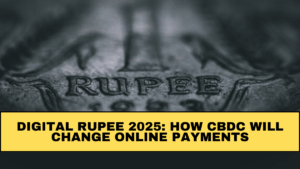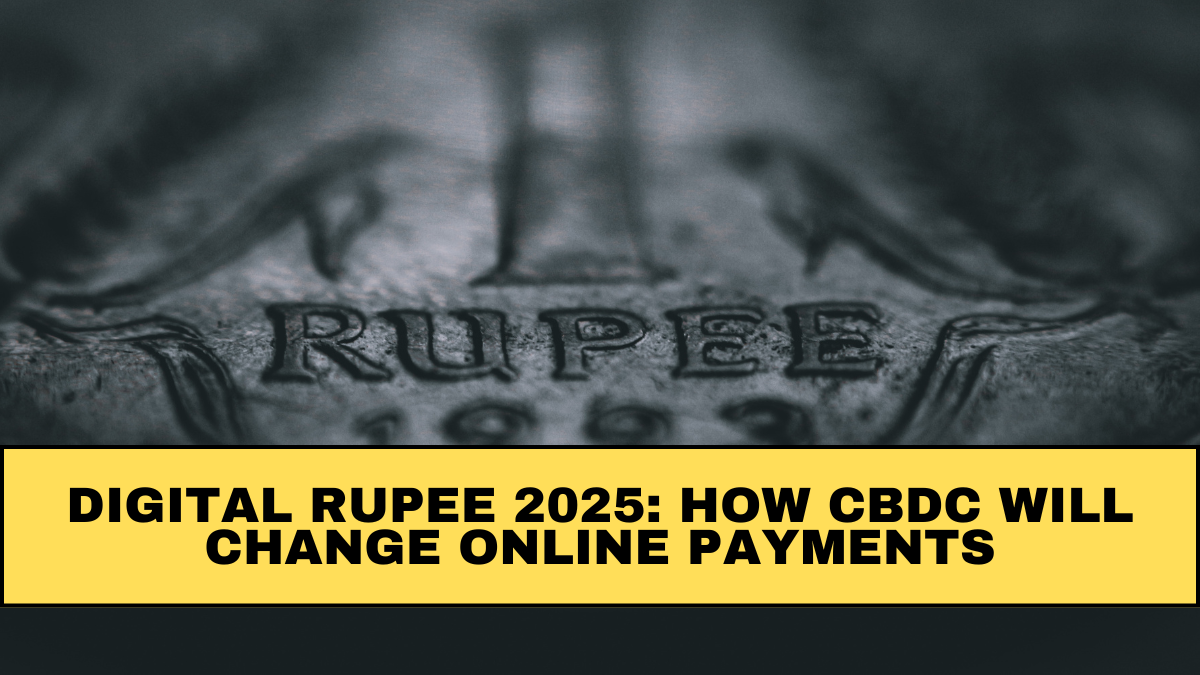The Digital Rupee 2025 is one of the biggest transitions in India’s financial landscape. With the RBI leading the rollout of its official CBDC, the country is moving toward a more efficient, transparent, and technology-driven payment ecosystem. This shift aims to make transactions faster, safer, and more cost-effective for both businesses and everyday users.
India’s growing fintech ecosystem is also playing a major role in supporting this transformation. Digital wallets, UPI, and online banking have already changed how people make payments. Now, the Digital Rupee introduces an entirely new form of money that works like cash but exists electronically with full backing from the Reserve Bank of India.

What the Digital Rupee Means for India in 2025
Faster and More Secure Payments
The Digital Rupee 2025 is designed to make transactions instant, even without internet in some cases. Since it is issued directly by the RBI, it reduces risks linked to fraud or system failures. Users will be able to complete payments more smoothly through mobile apps and banking platforms.
Cash-Like Convenience in Digital Form
RBI’s CBDC works similarly to physical cash, allowing person-to-person transfers without the need for a bank intermediary. This means users can hold digital rupees in a wallet and use them anytime, making it ideal for small and everyday payments.
Boost to India’s Fintech Innovation
The introduction of the digital rupee pushes fintech companies to build new tools, features, and services. It encourages more innovation in retail payments, digital lending, cross-border transfers, and automated settlements.
Key Benefits of the Digital Rupee
Lower Transaction Costs
Since CBDC minimizes the need for intermediaries, it can significantly reduce payment processing charges. Businesses, especially small retailers, may benefit from lower fees.
Better Transparency
Every Digital Rupee transaction can be verified securely. This helps improve accountability and reduces issues related to fake currency or payment fraud.
Stronger Financial Inclusion
The Digital Rupee 2025 helps bring more people into formal banking. It can be used even in areas with limited infrastructure, giving rural communities access to modern financial tools.
Improved Cross-Border Transfers
CBDC-based transfers are expected to be faster and cheaper compared to traditional remittance channels. This is especially useful for Indians working abroad and sending money back home.
Challenges to Overcome
Awareness and Adoption
Many users still prefer cash or traditional digital methods. Educating people about CBDC benefits will be crucial for widespread adoption.
Privacy Concerns
Since CBDC is traceable, some users worry about transaction visibility. RBI is working on frameworks that balance transparency with privacy.
Tech Infrastructure
To support nationwide usage, banks and fintech systems must stay upgraded and fully compatible with CBDC transactions.
Conclusion
The Digital Rupee 2025 marks a major step toward a smarter and more efficient financial system. With support from RBI’s CBDC framework and India’s growing fintech sector, it promises faster transactions, lower costs, and better security. As adoption grows across the country, the digital rupee will reshape how millions of people pay, save, and transact every day.
FAQs
What is the Digital Rupee?
It is RBI’s official CBDC, a digital version of India’s currency with full government backing.
How is the Digital Rupee different from UPI?
UPI moves money between bank accounts, while CBDC is digital cash stored directly in a wallet.
Is the Digital Rupee safe to use?
Yes, it is issued and regulated by the RBI, ensuring strong security and stability.
Will CBDC replace cash?
Not immediately. The Digital Rupee 2025 will coexist with physical cash for the foreseeable future.
Can people without bank accounts use the digital rupee?
Yes, CBDC wallets can be designed for users with limited or no access to traditional banking.
